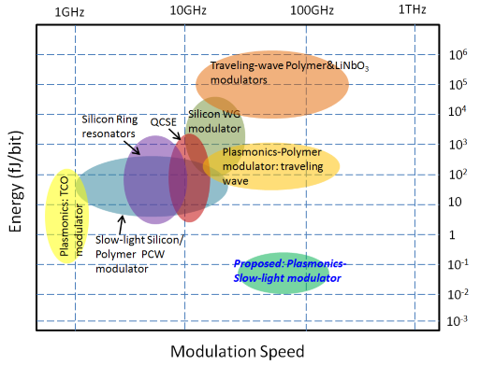Research team: Univ. Texas at Austin, Univ. Virginia, Univ. Delaware, Central Florida Univ., and Oregon State Univ.
External website link:
Even if the continuation of Moore's law meets a bottleneck, the increasing trend of network connections and bandwidth consumed is accelerating with no foreseeable sign of halting because of the bandwidth- Even if the continuation of Moore's law meets a bottleneck, the increasing trend of network connections and bandwidth consumed is accelerating with no foreseeable sign of halting because of the bandwidth-hungry applications. The total amount of content passing through the world’s networks is expected to increase to 35 Zettabytes(10^21)with unprecedented power consumption by 2020, meaning that by the end of this decade, with current technologies, service providers will need an astonishing over 20 times of power consumption they have in 2015.
Optoelectronic interconnects and optical logic gates provide key solutions to drastically reduce the power to modulate (e-to-o conversion), processing, Even if the continuation of Moore's law meets a bottleneck, the increasing trend of network connections and bandwidth consumed is accelerating with no foreseeable sign of halting because of the bandwidth-hungry applications. The total amount of content passing through the world’s networks is expected to increase to 35 Zettabytes(10^21)with unprecedented power consumption by 2020, meaning that by the end of this decade, with current technologies, service providers will need an astonishing over 20 times of power consumption they have in 2015.


Optoelectronic interconnects and optical logic gates provide key solutions to drastically reduce the power to modulate (e-to-o conversion), processing, transport, and demodulate (o-to-e) high speed signals with power consumption down to attojoule/bit (AJ/B) level. In this program, we propose a myriad of ultra-low power nanooptoelectronic devices for intra- and inter-chip optical interconnects and computing. Power saving and performance enhancement will be achieved with one- to two-orders of magnitude better than existing electronic counterparts.
The main research scope at OSU is the development of ultra-compact plasmonic modulators with the research goal of sub-femto-joule/bit energy efficiency. More research news will be released in the near future.
Related publications